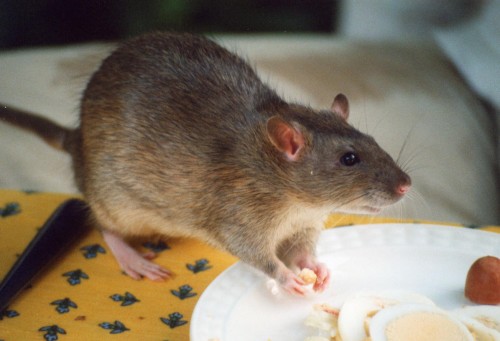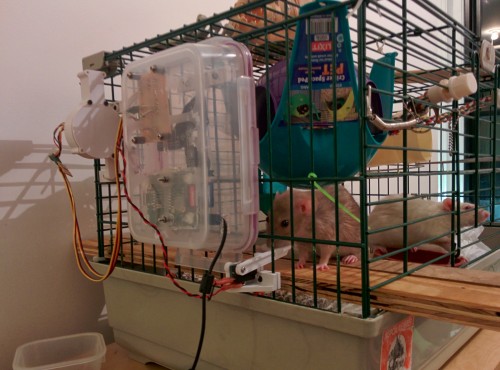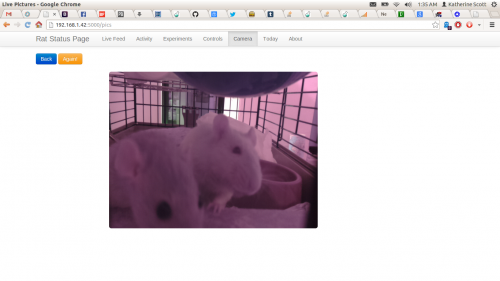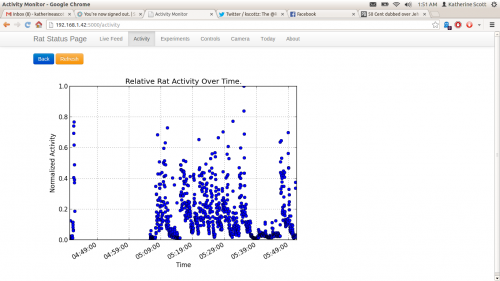| Skinner boxes are a kind of apparatus used for conditioning and training animals in scientific studies. You’ll almost certainly have read about them or seen them on TV: an animal is rewarded with a treat for pressing a button; or trained to respond to a patter of lights or other stimuli (like shapes, music and other sounds, or drawings). This is the sort of arrangement where a sequence of behavioural primitives (light flashes green, animal pokes green button, is rewarded with a snack) can be threaded together to create really useful data for behavioural scientists. Is it harder for an old mouse to learn to solve the puzzle than a young mouse might find it? Do other environmental variables, like diet, gender or temperature affect the results?  An example rat, engaging in behaviour. They’re not just used by behavioural scientists: a Skinner box can be a useful device for training pets, especially pets with a reasonable amount of smarts, like parrots or rats. It can automate the process you may have already used with your pet, where “correct” behaviour is rewarded – walk to heel, get a doggy snack. (We also find this approach helpful here at Pi Towers. When Gordon behaves himself, we give him a biscuit.) Skinner boxes are also pretty expensive. So Katherine Scott, computer vision and robotics expert, electronics ninja and rat owner/trainer, has built her own, which she intends to release as an open source device when she’s finished refining it.  Prototype Open Skinner box, with ratty customer. Katherine didn’t just want any old Skinner box, though – Open Skinner box is an Internet of Things device, and she says:
Katherine presented Open Skinner box at Pycon: you can watch a video of her presentation at her website, and find schematics, source code, sample rat-stats, thoughts on where the device is going next, and much more there too. Here at Pi Towers, we’ve been contemplating the acquisition of an office rodent, so we can make sure that the pet projects we’re working on for the resources section here work properly. (How many hamsters does it take to trigger a home-made tinfoil switch? What’s the best design for a Twitter-enabled food hopper?) If you’ve got suggestions for names, please leave them in the comments below. |
A Semi-automated Technology Roundup Provided by Linebaugh Public Library IT Staff | techblog.linebaugh.org
Wednesday, June 4, 2014
Train your rat: behavioural science at home
Subscribe to:
Post Comments (Atom)


No comments:
Post a Comment